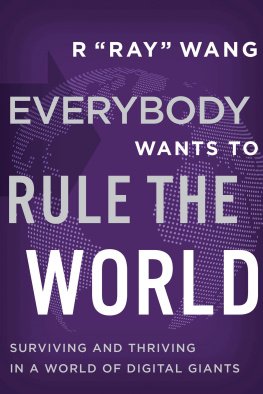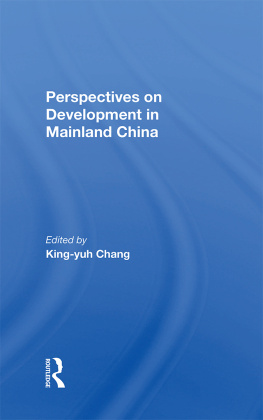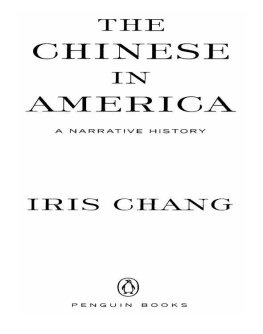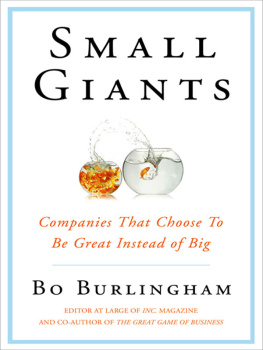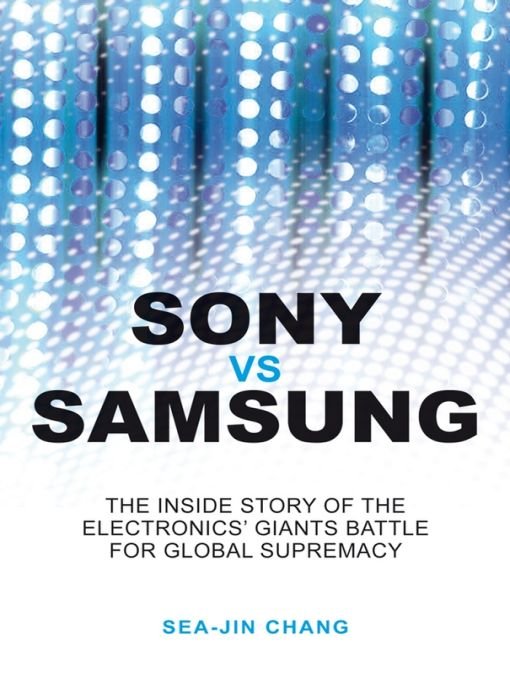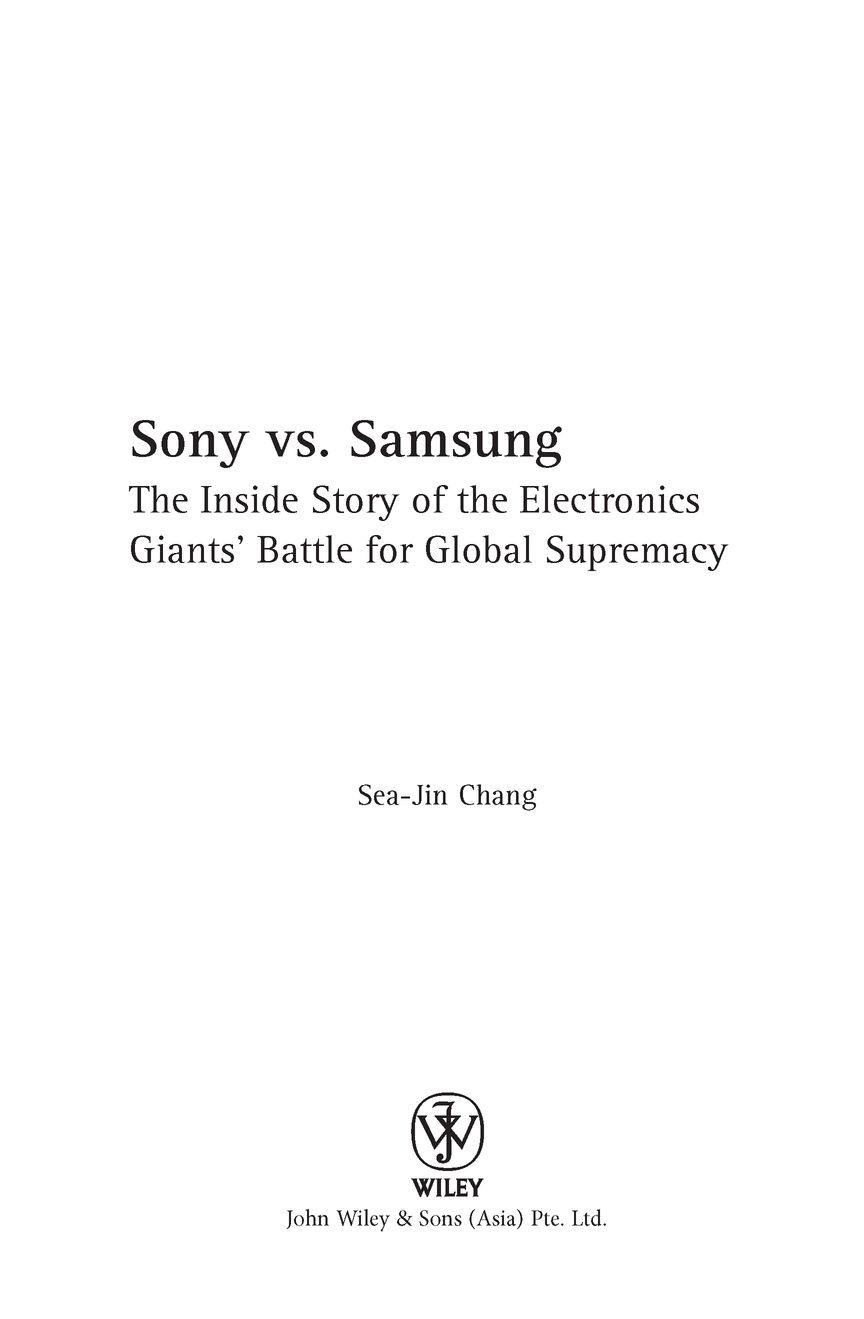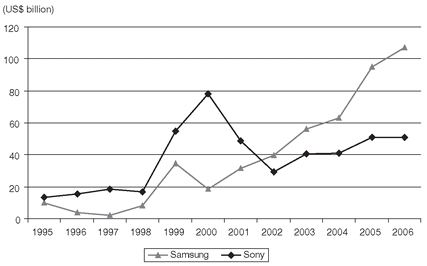Table of Contents
Preface
This book emerged out of my own curiosity to understand why Sonys performance, which had dominated the electronics industry for many decades, had dropped so rapidly, while Samsung Electronics, an obscure OEM (Original Equipment Manufacturer) not so many years ago, had emerged from nowhere. I must confess that I was one of the admirers of Sony for its innovative products as well as for its global management. I was fascinated by the late Akio Moritas book, Made in Japan, and was impressed by his global mindset and business acumen. This had led me to a research project in 1994-1995 to examine the evolution of Sonys U.S. operation. I had opportunities to meet with many outstanding managers and engineers at Sony including Kunitake Ando, who then was a head of its U.S. operation.
Sony was a role model for many Korean companies, including Samsung Electronics, with which I have maintained a close contact through various projects, and a direct comparison between these two would have been inappropriate at that time. Ten years later, however, the fortunes of these two companies changed dramatically. Sonys performance deteriorated, and Chairman Idei and President Ando had to resign in 2005. On the other hand, Jong-yong Yun, CEO, was applauded for turning Samsung Electronics into one of the most profitable companies in the electronics industry. I felt compelled to find out what had caused their changing fortunes.
Faced with the rapid digitalization of the electronics industry, Sony and Samsung Electronics had pursued rather different strategies. Sony tried to create synergies between hardware and contents by using the network. Samsung Electronics, on the other hand, focused on its parts business, and attempted to secure competitive advantages in end products by being a superior manufacturer. As I dug deeper in the analysis, I became more convinced that the performance differences between Sony and Samsung Electronics could not be attributed to their strategies. Rather, organizational processes and executives leadership may have made the difference. Sonys independent business units quickly became silos when its top management leadership was questioned. Internal politics among executives further exacerbated its stagnation. On the other hand, the fit between Samsungs strategy in responding to commoditization with speed and its militaristic organization may have contributed to its stellar performance. I further examine the challenges that Samsung Electronics faces, despite its remarkable performance, and evaluate Sonys potential, despite its current struggles.
My endeavor to analyze key strategic decisions by Sony and Samsung Electronics during the last decade would not have been successful without the assistance of Myoung-woo Lee, a 20-year veteran of Samsung Electronics, and, more recently, the president and chairman of Sony Korea. With his unique vantage point of both companies, he not only shared his own perspectives, but also introduced me to executives and managers of both companies for further interviews. I was fortunate enough to have personal interviews with high-level executives (including retirees) of both companies, which would not have been possible without Mr. Lees introductions. In addition, I had interviews with security analysts and executives of other firms in the electronics industry to get more objective, external opinions. I would like to take this opportunity to thank him for his contributions and assistance.
I am also deeply indebted to several other individuals and organizations. I would like to thank Korea University for providing a special research fund for this project to cover my frequent trips to Japan. I also benefited from discussions with my colleagues at Hitotsubashi University, where I spent the summer of 2007 while preparing the manuscript. John Lafkas, Kyung-hwan Yun, Sejung Seo, Sang-hee Lee, Young-jae Koh, and Jung-wook Shim provided very helpful editorial and research assistance for the project. I would like to thank Nick Wallwork, my editor at Wiley, and his fellow staff members including Joel Balbin, Fiona Wong, and Pauline Pek, as well as copyeditor Jay Boggis, who all did a wonderful job of turning the manuscript into a book. Last but not least, I would like to thank the executives and managers at Sony and Samsung Electronics who were willing to share their valuable time to meet with me. I cannot name them all here partly because there are too many and partly because most wanted to remain anonymous. I believe in management education. I believe managers can learn from the experience of other firms so that they will not repeat the same mistakes and they can make better informed decisions. Executives and managers from both companies I interviewed were eager to share their own perspectives. I would like to dedicate this book to them.
Sea-Jin Chang
Philadephia
February 2008
Sony and Samsung: Portraits of Two Global Competitors
Digital technology [presents] the greatest opportunity for those manufacturers who did not have a top market share in the analog world. If they make the correct changes in strategy, they possibly could leap-frog well-entrenched industry leaders.
Steve F. Smith, Editor-in-Chief, TWICE Magazine
Sony ruled a slower age when it could bring out a new gadget like the Walkman as a luxury item, then gradually lower the price and widen the market over time. Now, since the rise of cheap Asian manufacturing in the 1980s, companies need to bring out a stream of new products that sell immediately at high volume for a relatively low price, and are quickly displaced by the next new thing. Samsung is king of this age.
Newsweek
The Fall of Sony and the Rise of Samsung Electronics
A Turning Point
A few years ago, the electronics industry reached a milestone. Sony had long been acknowledged as the worlds best electronics manufacturer, but in 2002, Sonys market capitalization fell below Samsungs, which had been an obscure memory chip producer not many years ago. shows some of the raw data behind this story. By December 2006, Samsungs market capitalization was $106 billion, an increase of 400% since 2000 and twice that of Sonys. Since becoming CEO in 1997, Jong-yong Yun, has become famous for turning Samsung Electronics into one of the most profitable companies in the electronics industry. By contrast, Sonys Chairman Nobuyuki Idei and President Kunitake Ando resigned in 2005 and were succeeded by Howard Stringer and Ryoji Chubachi, respectively.
The Market Capitalization of Sony and Samsung Electronics
Source: Samsung Securities, Sony Fact Book.
Sony began from a position of strength. The late Chairman Akio Morita had shown the world that Sony had become a global company. Michael Porter, a strategy guru, praised Sony highly as one of the few Japanese companies that actually had a strategy.
Sonys troubles began, however, after it acquired Columbia Pictures in 1989 (see ). Things turned out so bad that by 1994 it had to write off accumulated losses of $3.5 billion. Sony then restructured its entertainment business to control costs. Sonys profitability peaked in 1997 when it introduced PlayStation, but started to decline again soon afterward, and sales became stagnant. By contrast, although Samsung Electronics sales and profitability were highly volatile during the late 1990s, its revenue almost doubled between 2000 and 2006, and it had a considerably higher rate of profitability than Sony enjoyed during this period.


